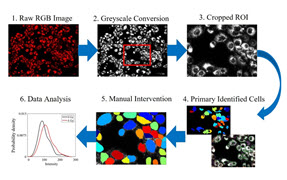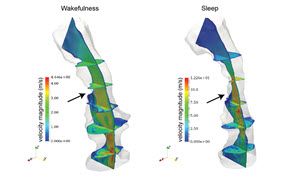New Optical Nanosensor
Breakthrough in brain mapping outlined in Neurophotonics article.
A new optical nanosensor enabling more accurate measurement and spatiotemporal mapping of the brain also shows the way forward for design of future multimodal sensors and a broader range of applications, according to authors of an article published in the January issue of Neurophotonics.
Neuronal activity results in the release of ionized potassium into extracellular space. Under active physiological and pathological conditions, elevated levels of potassium need to be quickly regulated to enable subsequent activity. This involves diffusion of potassium across extracellular space as well as re-uptake by neurons and astrocytes.
Measuring levels of potassium released during neural activity has involved potassium-sensitive microelectrodes. This has provided only single-point measurement and undefined spatial resolution in the extracellular space to date.
With a fluorescence-imaging-based ionized-potassium-sensitive nanosensor design, a research team from the University of Lausanne (Switzerland) was able to overcome challenges such as sensitivity to small movements or drift and diffusion of dyes within the studied region, improving accuracy and enabling access to previously inaccessible areas of the brain.
The work by Joel Wellbourne-Wood, Theresa Rimmele, and Jean-Yves Chatton was reported in the open-access article “Imaging extracellular potassium dynamics in brain tissue using a potassium-sensitive nanosensor.”
“This is a technological breakthrough that promises to shed new light — both literally and figuratively — on understanding brain homeostasis,” said Neurophotonics associate editor George Augustine, of Duke University (USA). “It not only is much less invasive than previous methods, but it adds a crucial spatial dimension to studies of the role of potassium ions in brain function.”
This potassium-sensitive nanosensor is likely to aid future investigations of chemical mechanisms and their interactions within the brain, the authors note. The spatiotemporal imaging created by collected data will also allow for investigation into the possible existence of potassium micro-domains around activated neurons and the spatial extent of these domains.
- Have a question or comment about this article? Write to us at spieprofessional@spie.org.
- To receive a print copy of SPIE Professional, the SPIE member magazine, become an SPIE member.




